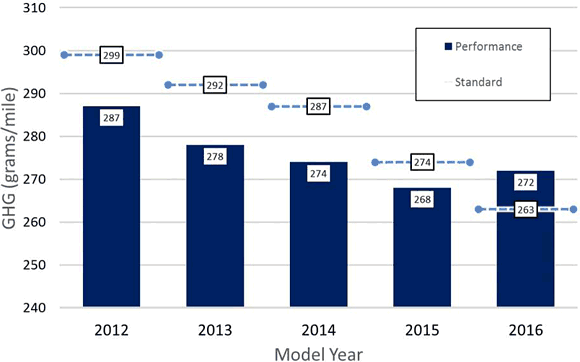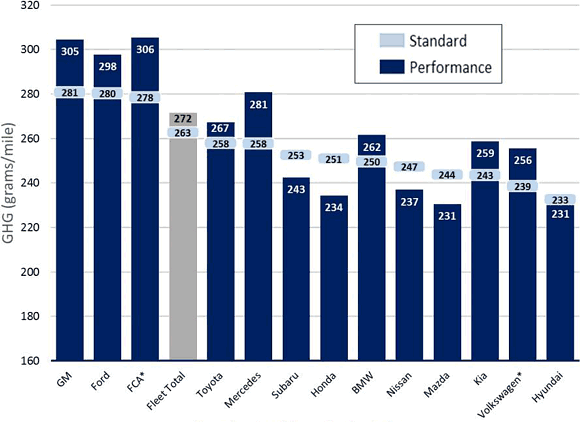US EPA releases 2017 CO2 Emissions and Fuel Economy Trends report
12 January 2017
The US Environmental Protection Agency (EPA) released two reports on light-duty vehicle CO2 emissions and fuel economy:
- Light-Duty Automotive Technology, Carbon Dioxide Emissions, and Fuel Economy Trends: 1975 Through 2017—The report summarizes trends in EPA’s best estimate of real-world tailpipe CO2 emissions and fuel economy (i.e., “adjusted” values that are similar to the EPA new vehicle fuel economy labels), and includes the final data for model year 2016 and preliminary data for 2017.
- GHG Emission Standards for Light-Duty Vehicles: Manufacturer Performance Report for the 2016 Model Year—This annual report assesses compliance performance for individual automakers and for the US fleet as a whole in meeting the standards.
According to the Fuel Economy Trends report, the final MY 2016 adjusted, real world CO2 emissions rate for all new personal vehicles is 359 g/mi, which is a 2 g/mi decrease from MY 2015 and the lowest level ever. The MY 2016 adjusted fuel economy is 24.7 mpg, which is 0.1 mpg higher than MY 2015, and is a record high. (The EPA used an updated methodology to calculate the adjusted fuel economy and CO2 values, and the results are not comparable to values in previous editions of the report.)

(The ‘adjusted’ values are about 20% lower than the CAFE compliance values)
Among positive trends, the EPA also emphasized that vehicle weight and power have leveled off, and that the average new vehicle footprint remained stable.
However, in 2016 the auto industry increased their actual CO2 emissions, and relied on credits from previous years to comply with the standards. Overall industry performance in 2016 was 9 g/mi higher than required by the 2016 GHG emission standard. This makes 2016 the first model year in which the industry generated a GHG emissions deficit, after generating credits in each of the first four years of the EPA GHG emissions program.

(GHG emissions are CAFE values)
Only five of the thirteen large manufacturers reported meeting their standard, with compliance margins ranging from 16 g/mi (Honda) to 1 g/mi (Hyundai). The remaining eight manufacturers generated deficits against their standard due to fleet GHG emissions that were higher than the standard by amounts ranging from 10 g/mi (Toyota) to 28 g/mi (FCA).

(GHG emissions are CAFE values; * Figures based on initial certification data as the company is subject of an ongoing investigation.)
The lack of actual CO2 reductions in 2016 reflects the diminishing return of new efficiency technologies, with each percentage point of additional fuel economy improvement becoming progressively more expensive. The US GHG standards require very significant—from the vehicle technology point of view—emission reductions, on the order of 4% per year through 2025. Following petitions by the auto industry, the EPA and the NHTSA have re-opened the Midterm Evaluation of 2025 GHG emission standards. The action may result in relaxing and/or delaying the standards.
However stringent and challenging for the auto makers, the fuel economy standards do not appear effective in reducing US demand for transportation fuels. According to recent API data, US petroleum deliveries in October 2017 moved up by 1.1% from October 2016, marking the highest October deliveries in 10 years, since 2007. The corresponding year-to-date deliveries moved up 1.2% compared to the same period in 2016.
Source: US EPA